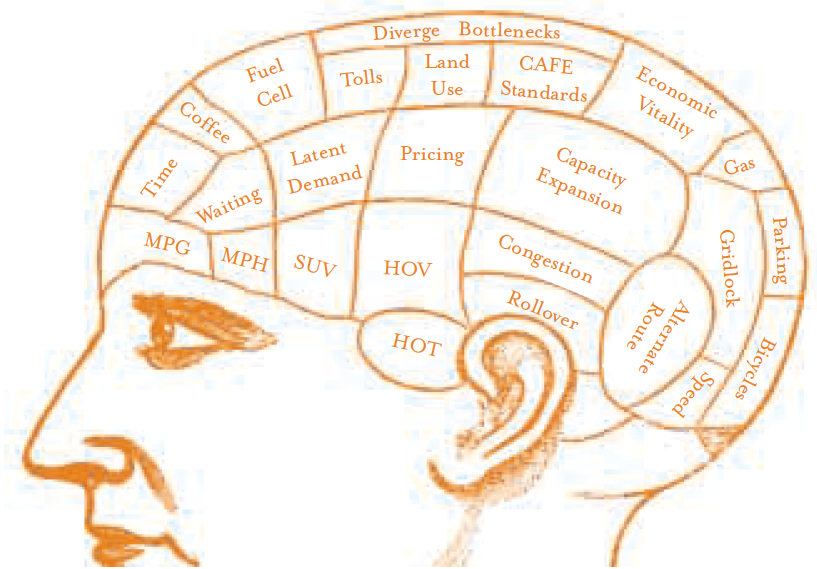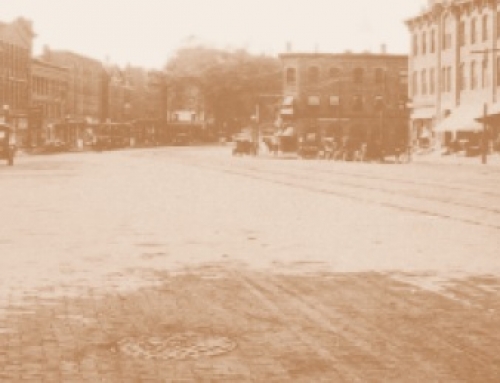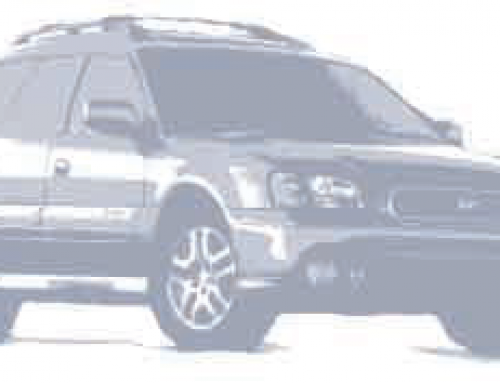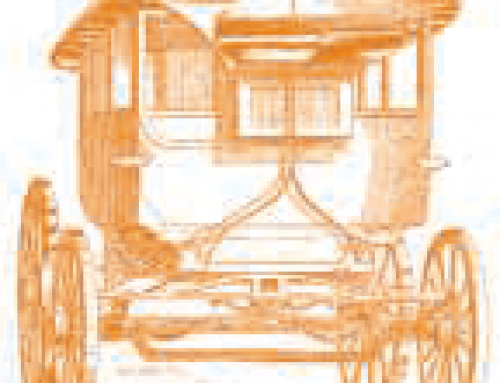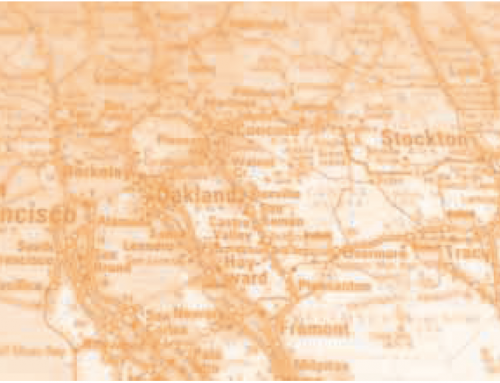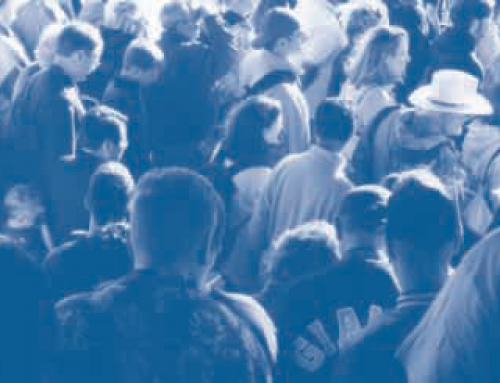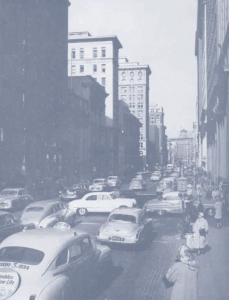 Traffic congestion and cities, it seems, go hand in hand. Everyone complains about being stuck in traffic; but, like the weather, no one seems to do anything about it. In particular, traffic engineers, transportation planners, and public officials responsible for metropolitan transportation systems are frequently criticized for failing to make a dent in congestion.
Traffic congestion and cities, it seems, go hand in hand. Everyone complains about being stuck in traffic; but, like the weather, no one seems to do anything about it. In particular, traffic engineers, transportation planners, and public officials responsible for metropolitan transportation systems are frequently criticized for failing to make a dent in congestion.
But is traffic congestion a sign of failure? Long queues at restaurants or theater box offices are seen as signs of success. Should transportation systems be viewed any differently? I think we should recognize that traffic congestion is an inevitable by-product of vibrant, successful cities, and view the “congestion problem” in a different light.
Conventional wisdom holds that traffic congestion exacts a terrible social and economic toll on society; expanding transportation capacity only makes things worse; and redesigning cities and expanding alternative transportation modes offer the best long-term means for reducing traffic congestion. I want to offer ten propositions that challenge these ideas and suggest how we might begin to think differently about traffic congestion.
PROPOSITION ONE: Traffic congestion is evidence of social and economic vitality; empty streets and roads are signs of failure.
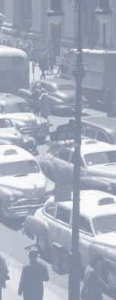 We frequently read staggering estimates of the costs traffic congestion imposes on society. The Texas Transportation Institute, for example, placed the cost of metropolitan traffic congestion in 75 of the over 300 US metropolitan areas at $68 billion in the year 2000. Given such estimates, we can’t help but conclude that the economic health of metropolitan areas is threatened by congestion. While nobody likes being stuck in traffic, I think we overestimate its costs.
We frequently read staggering estimates of the costs traffic congestion imposes on society. The Texas Transportation Institute, for example, placed the cost of metropolitan traffic congestion in 75 of the over 300 US metropolitan areas at $68 billion in the year 2000. Given such estimates, we can’t help but conclude that the economic health of metropolitan areas is threatened by congestion. While nobody likes being stuck in traffic, I think we overestimate its costs.
Cities exist because they promote social interactions and economic transactions. Traffic congestion occurs where lots of people pursue these ends simultaneously in limited spaces. Culturally and economically vibrant cities have the worst congestion problems, while declining and depressed cities don’t have much traffic. By some estimates, New York and Los Angeles are America’s most congested cities. But if you want access to major brokerage houses or live theater, you will find them easier to reach in congested New York than in any other metropolitan area. And if your firm needs access to post-production film editors or satellite-guidance engineers, you will reach them more quickly via the crowded freeways of LA than via less crowded roads elsewhere.
Despite congestion, a larger number and wider variety of social interactions and economic transactions can be consummated in large, crowded cities than elsewhere. Seen in this light, congestion is an unfortunate consequence of prosperity and a drag on otherwise high levels of accessibility, not a cause of economic decline and urban decay. So while we can view congestion as imposing costs on metropolitan areas, the costs of inaccessibility in uncongested places are almost certainly greater.
The terrible economic and environmental tolls that congestion exacts in places like Bangkok, Jakarta, and Lagos are undeniable. But mobility is far higher and congestion levels are far lower here in the US, even in our most crowded cities. That’s why, for now, we don’t see people and capital streaming out of San Francisco and Chicago, heading for cities like Alturas, California, and Peoria, Illinois.
PROPOSITION TWO: Our current focus on transportation networks is misplaced and ignores the effects of congestion on individuals and firms.
Freeways form the backbone of nearly every metropolitan transportation network in the US. While they comprise only a small fraction of metropolitan street and highway mileage, freeways carry more than a third of all vehicular travel. When people speak of congestion in cities, they typically mean freeway congestion, and most studies of metropolitan congestion focus mostly, if not exclusively, on freeway delay. But freeway delay may not be a meaningful way to measure how congestion affects people.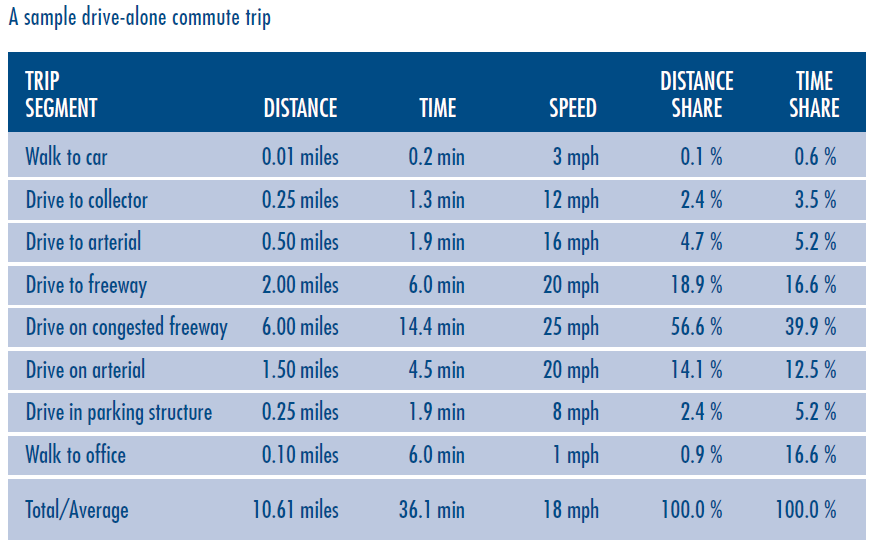
Consider the following example. A commuter walks from her front door to her car, parked in her driveway. She drives a quarter mile on local streets to a larger collector street, and then a half mile to a large arterial street. She then travels on the arterial for a couple miles to a freeway on-ramp. Once on the freeway, she drives in congested conditions for six miles, exits onto another arterial, and drives another mile and a half before entering a parking structure at her worksite. She makes three loops up to the third level of the structure, where she parks. Then she walks fifty yards, waits for an elevator which takes her to the first floor, enters another building, and waits for another elevator to take her to her fifth-floor office.
In this example, the drive on the congested freeway accounts for well over half the travel distance, but much less than half the travel time. So even a dramatic fifty percent increase in travel speed on the congested freeway link of this trip would reduce the time of this sample commute by only five minutes—less than fifteen percent.
Travel behavior research has consistently found that transfer and waiting times— such as walking from the car to the office, or waiting for a bus or an elevator—comprise a large share of total trip times and are viewed by travelers as far more onerous than in- vehicle travel time. Most travelers would much rather reduce transfer and waiting times by five minutes than in-vehicle travel on a congested roadway by five minutes.
So we cannot estimate congestion costs by simply measuring network delay. We must instead examine congestion’s influence on the choices firms and households make about location and travel. If delay on a congested freeway comprises only a small portion of someone’s commute, that person’s congestion costs are low even if congestion on the freeway network is high. And if a firm chooses to locate in a congested area that offers easy access to suppliers or customers, it is a mistake to consider congestion costs without balancing them against access benefits.
PROPOSITION THREE: Automobiles are central to metropolitan life, and efforts to manage congestion must accept this fact.
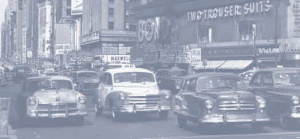 The so-called American love affair with automobiles is not an irrational addiction, as some assert. Instead it is a rational response both to the utility of private vehicles and to public policies supporting their use. Widespread auto use unquestionably imposes significant costs on society, but it also brings enormous private benefit. It’s so easy to see the many costs of auto use—like chronic traffic congestion—that we can forget how fast and flexible automobiles benefit travelers.
The so-called American love affair with automobiles is not an irrational addiction, as some assert. Instead it is a rational response both to the utility of private vehicles and to public policies supporting their use. Widespread auto use unquestionably imposes significant costs on society, but it also brings enormous private benefit. It’s so easy to see the many costs of auto use—like chronic traffic congestion—that we can forget how fast and flexible automobiles benefit travelers.
Most research confirms that motorists do not pay the full costs they impose on society. While there is much debate over how much automobile travel is underpriced, there is general agreement that proper pricing of automobile use would both reduce congestion and increase the attractiveness of other modes such as public transit, bicycling, and walking.
But even if so-called marginal cost pricing of automobile use were implemented, private vehicles would not soon forfeit their dominant role. Most (though not all) experts agree that automobiles will remain central to urban life for the foreseeable future, and even the most ambitious efforts to increase the attractiveness of public transit, bicycling, and walking are unlikely to change this fact. Even in European cities where policies and planning explicitly favor alternative modes over automobiles, private vehicle use is increasing. Most transportation researchers also agree that some form of pricing would be the best way to reduce metropolitan traffic congestion. But many public officials see toll roads and parking charges as politically risky and unpopular, and insist that traffic congestion be mitigated by other, less effective means. The traveling public’s frosty reception of such serious proposals to reduce congestion suggests to me that people see it as less of a problem than they let on.
PROPOSITION FOUR: Short-lived congestion relief through capacity expansion is not proof that adding capacity is a bad idea.
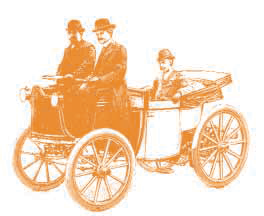 When capacity is expanded on heavily used roads, reduced delay can prove fleeting. This leads some observers to conclude that widening roads is a waste of time and money. Others go further, claiming that it makes things worse, since more people are delayed and more emissions are produced after the expanded facility fills up again with traffic. Some have likened it to buying a bigger belt to address the problem of weight gain.
When capacity is expanded on heavily used roads, reduced delay can prove fleeting. This leads some observers to conclude that widening roads is a waste of time and money. Others go further, claiming that it makes things worse, since more people are delayed and more emissions are produced after the expanded facility fills up again with traffic. Some have likened it to buying a bigger belt to address the problem of weight gain.
But this analogy is misleading because it treats travel as simply a bad habit, and ignores the role of mobility in facilitating social interactions and economic transactions. While capacity expansion in areas of dense activity may fail to eliminate congestion, it may still bring significant social and economic benefit by accommodating more activity.
PROPOSITION FIVE: The effects of latent/induced demand are not confined to capacity expansion.
Given that latent/induced demand may help to recongest roadways following capacity expansion, some argue that we should instead emphasize operational improvements (such as coordinated signal timing and ramp metering) and transit-capacity expansions (like added rail transit and express bus service). Such improvements may be wise investments, but they are no less vulnerable to the recongesting effects of latent/induced demand than road widenings.
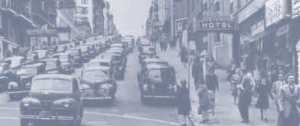 When capacity is expanded on a congested facility, delay is reduced in the short term, and traffic speeds increase. Increased speeds reduce the time costs of trips, making travel more attractive. Travelers who were previously dissuaded by congestion from making car trips begin to do so, and the facility gradually becomes congested again. This, in a nutshell, is the latent-demand effect.
When capacity is expanded on a congested facility, delay is reduced in the short term, and traffic speeds increase. Increased speeds reduce the time costs of trips, making travel more attractive. Travelers who were previously dissuaded by congestion from making car trips begin to do so, and the facility gradually becomes congested again. This, in a nutshell, is the latent-demand effect.
But the effects of latent/induced demand are not limited to road widenings. If a new ramp-metering program smoothes traffic flow and reduces delay in the short-term, it has the same effect as increased capacity on the time-cost of travel; so does a new rail line that lures a substantial number of travelers off a parallel roadway. This is why congestion on the San Francisco-Oakland Bay Bridge was only temporarily reduced when BART opened in the 1970s. Absent some corresponding increase in the monetary price of a trip, any change that reduces delay and travel times is subject to these effects.
To get around this conundrum, some argue that we need to focus, not on transportation systems, but on the land uses that generate and attract trips. Specifically, they call for mixing land uses and increasing development densities into more compact, transit-oriented development. But compact development is unlikely to reduce congestion, as the remaining propositions testify.
PROPOSITION SIX: Changing land use patterns in an attempt to change travel behavior is a very long-term endeavor.
Metropolitan land use patterns change very slowly, slower than changes in employment, trade, demographics, and especially technology. Even in rapidly growing areas, new urban developments and new land uses comprise only a fraction of the over- all urban fabric. Thus, even dramatic changes to new development patterns would have to be maintained for decades before they could significantly reshape metropolitan land uses and, in turn, overall travel origins and destinations.
PROPOSITION SEVEN: Compact development is correlated with more walking and transit use, but the nature of this relationship is not completely understood.
The extensive research on land use/transportation relationships is fraught with methodological problems that scholars are only now beginning to untangle. We know that older, central cities host far more walking and transit use than do newer cities, but what is it about older, central cities that causes this? Higher population and employment densities? Proportionally lower levels of street and road capacity? Limited and expensive parking? Frequent transit service operating in dense networks? Commercial destinations located within walking distances of households? Higher proportions of lower-income households with less access to automobiles? Higher proportions of immigrants, elderly residents, and young, single residents who are more willing to walk and use transit?
Almost certainly, all these factors (and more) synergistically combine to increase walking and transit trips. But we still don’t know for certain which of these factors is most important in influencing mode choice. And it remains unclear whether exporting a design-oriented subset of these factors—such as higher population densities and mixed land uses—to new developments in outlying areas will have much influence on travel behavior at all.
PROPOSITION EIGHT: The best way to get more people to walk and ride transit is by making driving slow, uncertain, and expensive.
Some argue that compact development increases the attractiveness of alternative modes like walking, biking, and transit riding. This is probably true. But the research in this area suggests to me that older, densely developed areas encourage walking and transit use more by decreasing the utility of driving—through scarce and expensive parking and slow speeds on congested streets—than by increasing the utility of other modes. But most proposals for compact development in outlying areas emphasize design treatments to increase the ease of walking and transit use far more than they seek to increase the cost, time, or uncertainty of auto use.
PROPOSITION NINE: Compact development—whether in older, central city areas, or in newer, outlying areas—increases congestion.
The most densely developed cities tend to be most congested. Traffic congestion decreases the attractiveness of automobile travel, thereby increasing the relative attractiveness of some other modes (though travelers may not be better off as a result). So although land use planning may raise densities and possibly lead to increased walking and transit use and to decreased car travel, it does so in part by increasing congestion.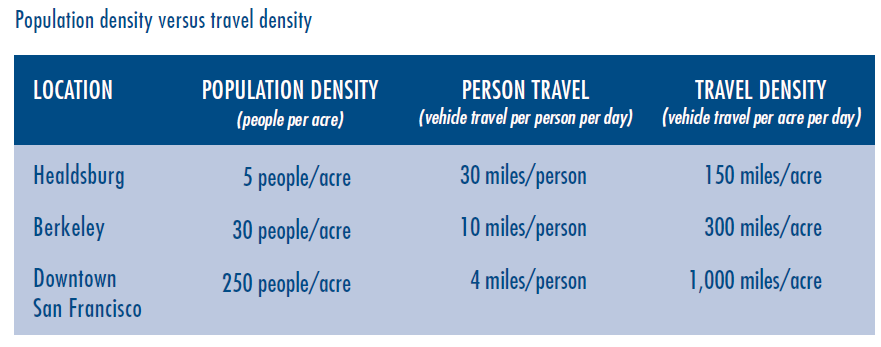
Here’s an example from the San Francisco Bay Area: In Healdsburg, at the northerly reaches of Sonoma County, population density is low at five people per acre, and vehicle travel is high at thirty miles per person per day. In Berkeley, population density is six times higher at thirty people per acre, while vehicle travel is two-thirds lower at ten miles per person per day. And in downtown San Francisco, population density is fifty times higher than in Healdsburg, at 250 people per acre, while vehicle travel is 7.5 times lower at just four miles per person per day. Does this mean that congestion levels are 7.5 times higher in Healdsburg than in San Francisco? Of course not.
If we compare the density of vehicle travel in Healdsburg and San Francisco, we can see why. In Healdsburg, residents generate 150 daily vehicle miles of travel per residential acre. In Berkeley, residents generate 300 daily vehicle miles of travel per residential acre. But in San Francisco, residents generate 1,000 daily vehicle miles of travel per residential acre. Put simply, vehicle travel decreases more slowly than population density increases, and congestion is the result.
PROPOSITION TEN: Absent some form of congestion/parking pricing, development patterns congruent with private vehicle use offer the best chance for land use planning to reduce congestion.
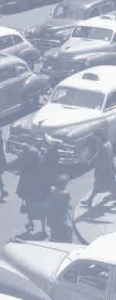 Automobiles offer both temporal and point-to-point flexibility that travelers clearly find attractive. The problem arises, of course, when too many automobiles are headed in the same direction at the same time.
Automobiles offer both temporal and point-to-point flexibility that travelers clearly find attractive. The problem arises, of course, when too many automobiles are headed in the same direction at the same time.
Land uses, like large commercial centers, and transportation facilities, like high- capacity freeways, concentrate traffic. Low-density, dispersed land uses, on the other hand, spread traffic widely; they facilitate increased per capita vehicle use, but also decrease the overall density of vehicle travel and, hence, reduce congestion. One might term such development “Smart Sprawl.”
What most people describe as urban sprawl is indeed low-density development. But it is characterized by concentrated commercial and employment centers near freeways that congregate traffic into congested corridors. With respect to congestion, this sort of “Dumb Sprawl” is perhaps the worst of all possible worlds.
I am not necessarily advocating “Smart Sprawl.” Propositions Six and Seven state that planning land uses to influence travel behavior is an uncertain and very long-term proposition. Short-term traffic management objectives should influence, but not drive, the design of new cities and suburbs. The application of new technologies and adroit capacity expansions may present the best opportunities for managing congestion in the short-term, and some forms of road and parking pricing probably offer the best opportunities for reducing congestion over the longer term.
With respect to land use, we may choose to promulgate smart-growth policies to achieve a wide variety of otherwise worthy goals. But, for the reasons I have outlined here, we need to be clear that congestion reduction simply cannot be one of those goals.
Further Readings
Anthony Downs. Stuck in Traffic: Coping with Peak-Hour Traffic Congestion. Washington, D.C.: The Brookings Institution. 1992
David Schrank and Tim Lomax. The 2002 Urban Mobility Report. Texas A&M University: Texas Transportation Institute. 2002.
Kenneth A. Small, Clifford Winston, and Carol A. Evans. Road Work: A New Highway Pricing and Investment Policy. Washington, D.C.: The Brookings Institution. 1989.
Surface Transportation Policy Project. Easing the Burden: A Companion Analysis of the Texas Transportation Institute’s Congestion Study. Washington, DC: STPP. 2001.

